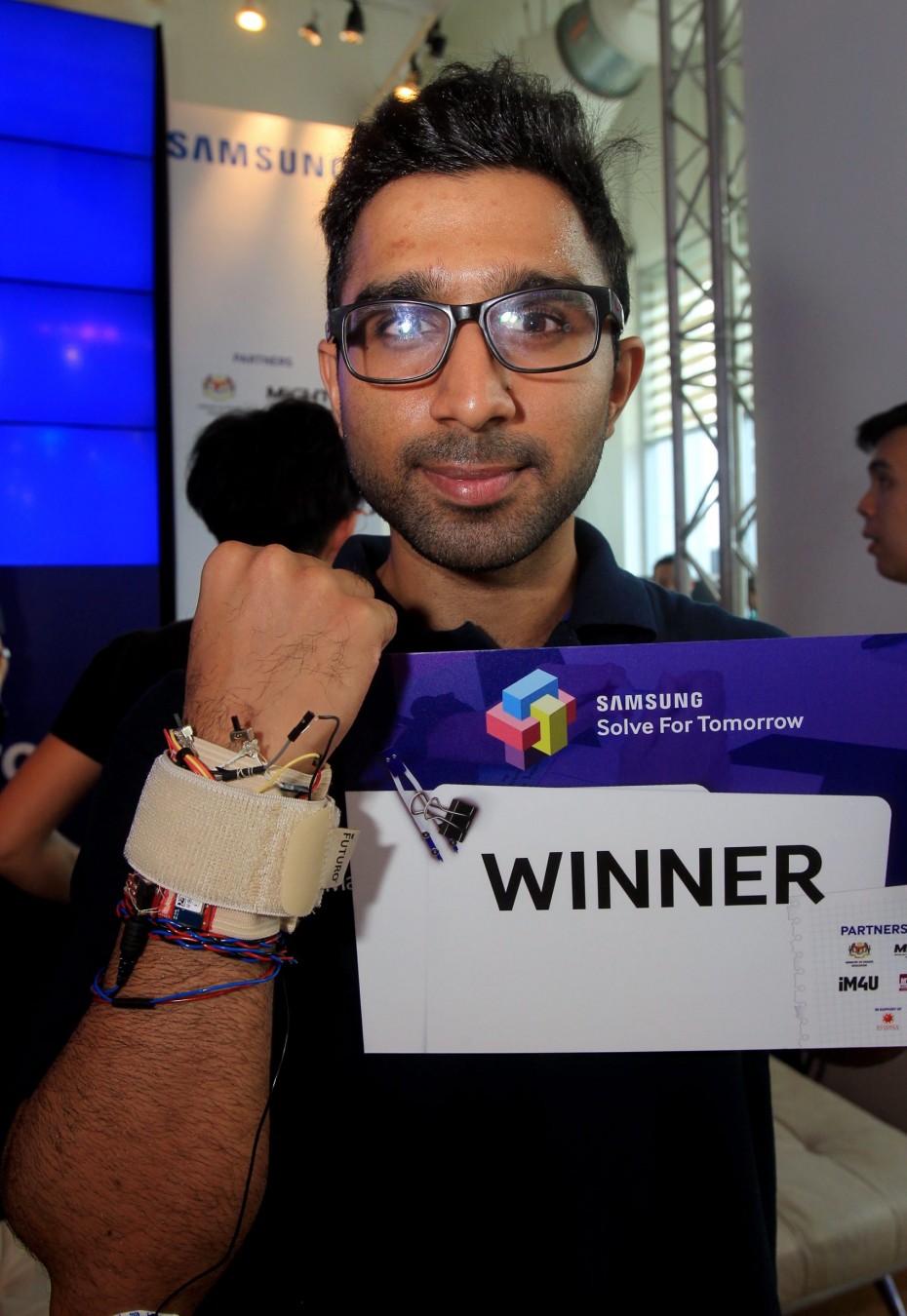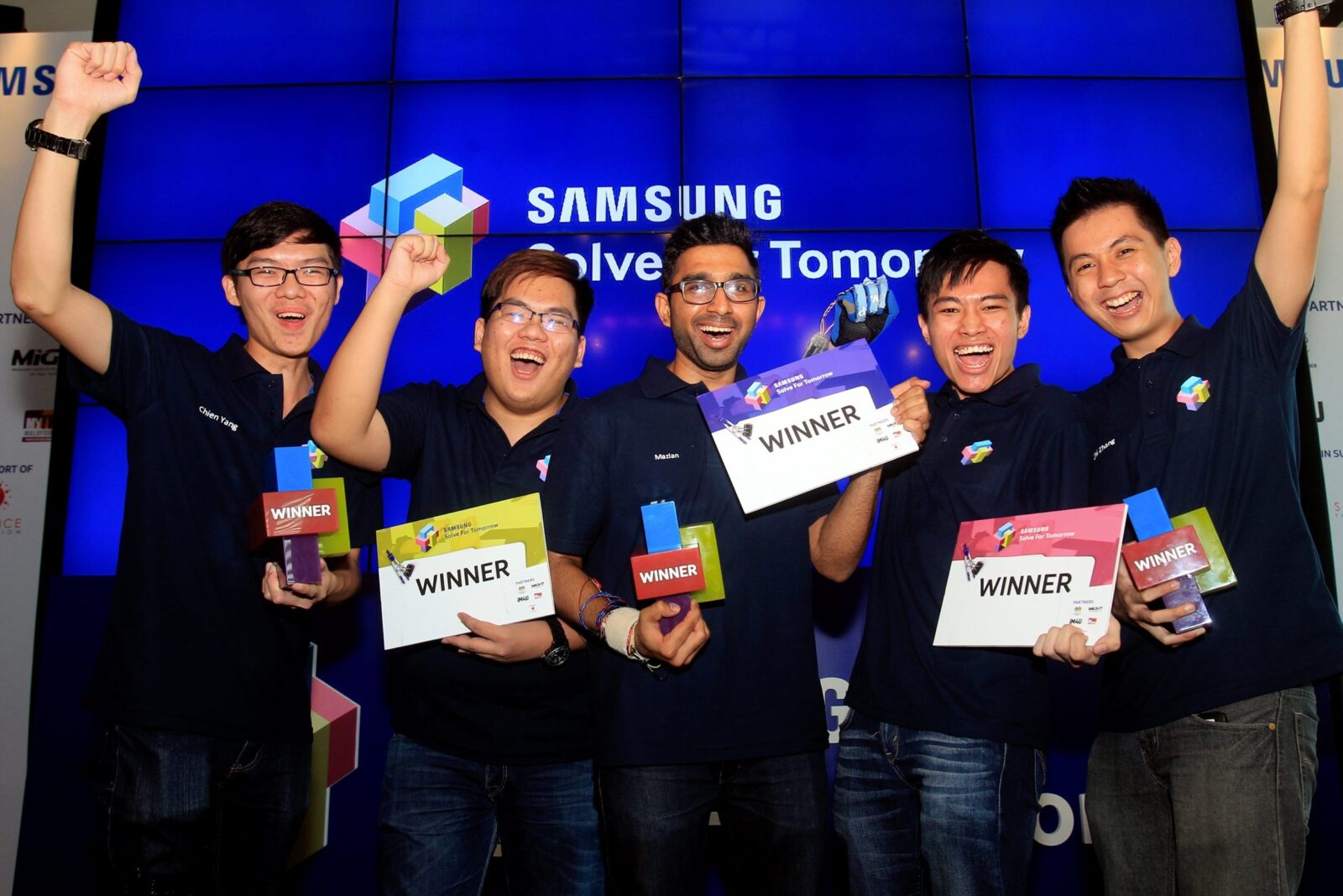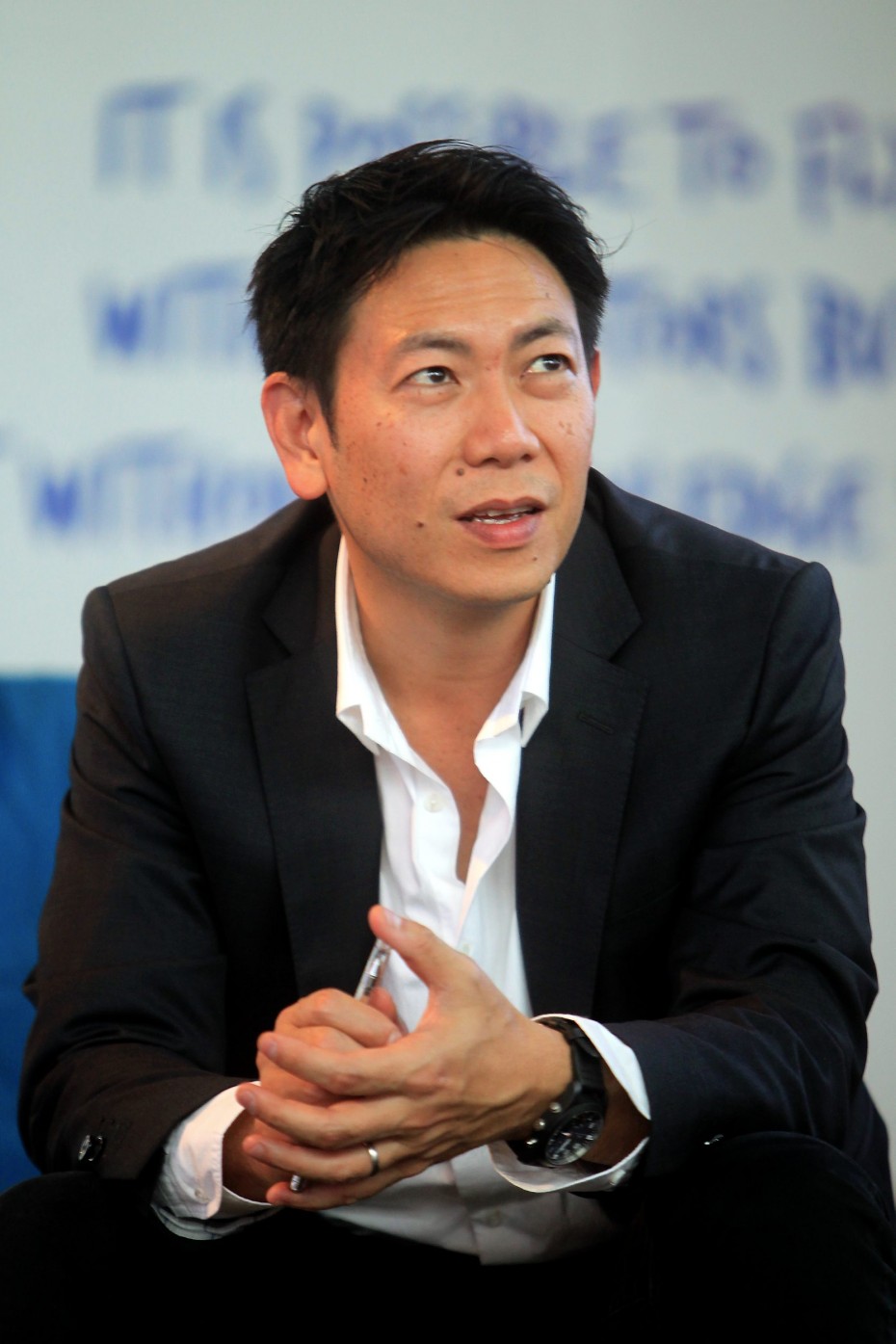AFTER watching partially-impaired stroke survivors undergoing physiotherapy, Mazlan Alam Malik, 23, realised many people find rehabilitation tedious and monotonous. It certainly isn’t something patients looked forward to every day.
He wondered if there was anything that could be done to create a fun programme to keep patients’ motivated for physical rehab.
The mechatronic engineering student from Monash University came up with a creative solution – he would create a device that would allow them to play mobile games, using muscle contractions to control movements.
Mazlan comes from a family with a strong medical background, so his idea was a marriage of two of his biggest interests – medicine and engineering.
After over a year, his prototype was finally ready.
His invention allows patients to play any mobile game simply by connecting the device to their phone via Bluetooth.
The device also tracks their rate of fatigue and point of muscle failure.
Mazlan submitted his invention as his final year project, and also sent it to the Samsung Solve For Tomorrow competition, held in July.
He aced his final year project, and was one of three winners of the Samsung competition to receive a seed grant of RM20,000, a Samsung device as well as other money-can’t-buy prizes like an internship with Samsung Malaysia and a visit to the Samsung HQ in South Korea.

Mazlan developed a device that allows stroke survivors to play smartphone games that help with physiotherapy. ― Photos by: ART CHEN/The Star
The competition was held to encourage students to find a problem in the fields of science, technology, engineering, arts and mathematics, and develop a prototype solution.
Over 100 submissions were received, but only 20 teams were invited to a bootcamp where they were trained to develop their idea and produce a working prototype – all in the span of a few months.
Ten shortlisted teams presented their prototype at the finale to a panel that included Ken Ding, Samsung Electronics Head of Product Innovation, South East Asia & Oceania; and Rushdi Abdul Rahim, senior vice-president of Malaysia Industry-Government Group for High Technology (MiGHT).
Three winning teams were selected, alongside one other team that won the People’s Choice Award, based on audience votes.
Making an impact
Eight of the ten finalists developed prototypes that aim to improve, diagnose and aid healthcare in some way.
This means that young people today aren’t as detached as some people think, said Rushdi.
“Out of the ten finalists, there were eight healthcare solutions and one focusing on social improvement, so I dare say that young people today are well aware of current issues,” he said.
The second winning team led by Lim Zhi Zhang, 22, invented a wheelchair that can be controlled by the bending motion of the finger.
The final winning team led by Ching Weng Gui, 22, invented a Lower Extremity Exoskeleton prototype that helps older folks stand or walk longer.
Ding echoed Rushdi’s sentiments, saying that he was envious of young people today, as they have various opportunities for growth.
“Gen-Y-ers grew up in the era of the Internet explosion. This has broadened their mind and made them more receptive to the changes happening around the world,” he said.
He added that young people should be given opportunities to channel their focus to effect more good in the world.
“With their endless enthusiasm and genuine belief in making a positive impact on society, we will definitely see more Zuckerbergs, Dorseys and Kalanicks in the world,” said Ding.
Overcoming obstacles
The participants overcame many challenges, including time management and multi-tasking, to produce the prototypes.
Ching said that his biggest challenge was time management. In addition to working on improving his prototype, he was also facing his final exams.
“I have been so pressured lately I nearly gave up. Luckily my team mates and supervisor gave me the support I needed to go on,” he said. And now that the competition is over, he is happy their efforts have paid off.
Lim faced occasional mental blocks, but always found a solution for it.
“When I need inspiration, I put my work aside and focus on doing something fun – just anything that’s not work,” said Lim.
He also said that joining the competition has opened many doors for him.
At the bootcamp, they met industry leaders who gave feedback for improving their prototype and also taught them how to market the products.
“I now have a wider perspective of the tech world, and I learnt that passion and interest will take you further than anything else,” said Lim.
Mazlan was the only one of the three winning teams who worked solo, which posed a different set of challenges.
When he encountered dead ends, he saw it as an opportunity to think creatively.
“I believe there is more than one solution to every problem,” he said confidently. “With current technology and the right mindset, I don’t think there are any dead ends.”








Leave a reply